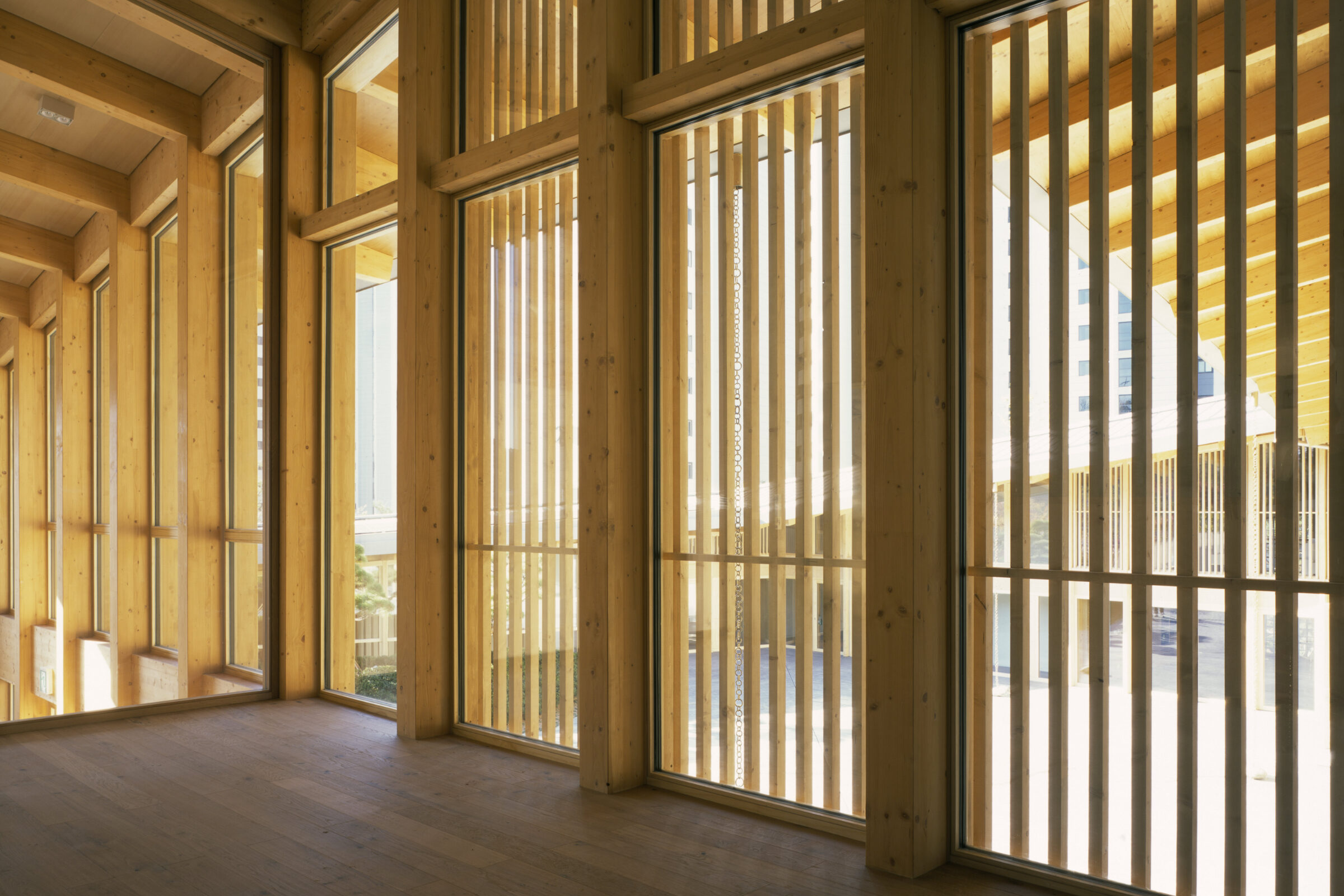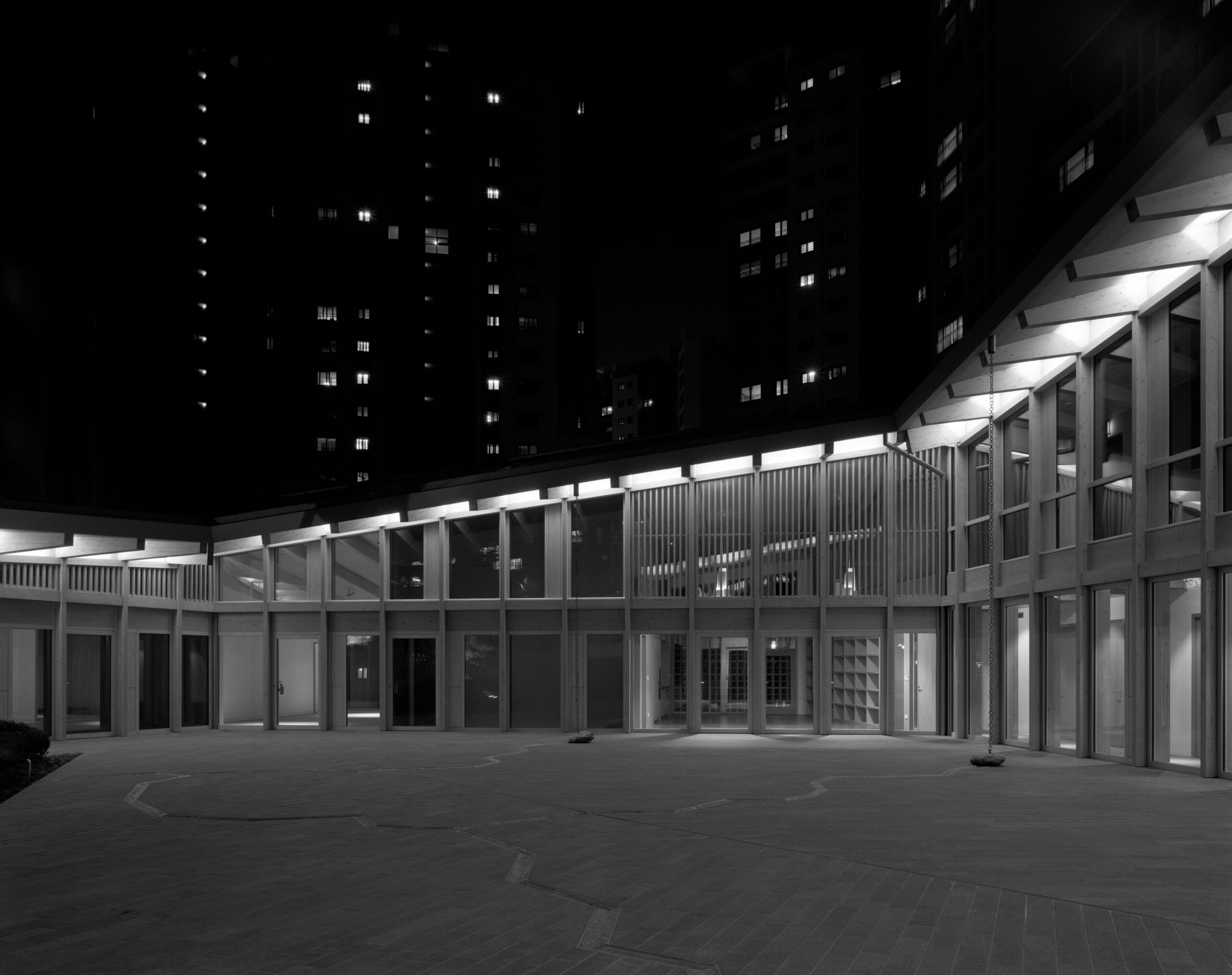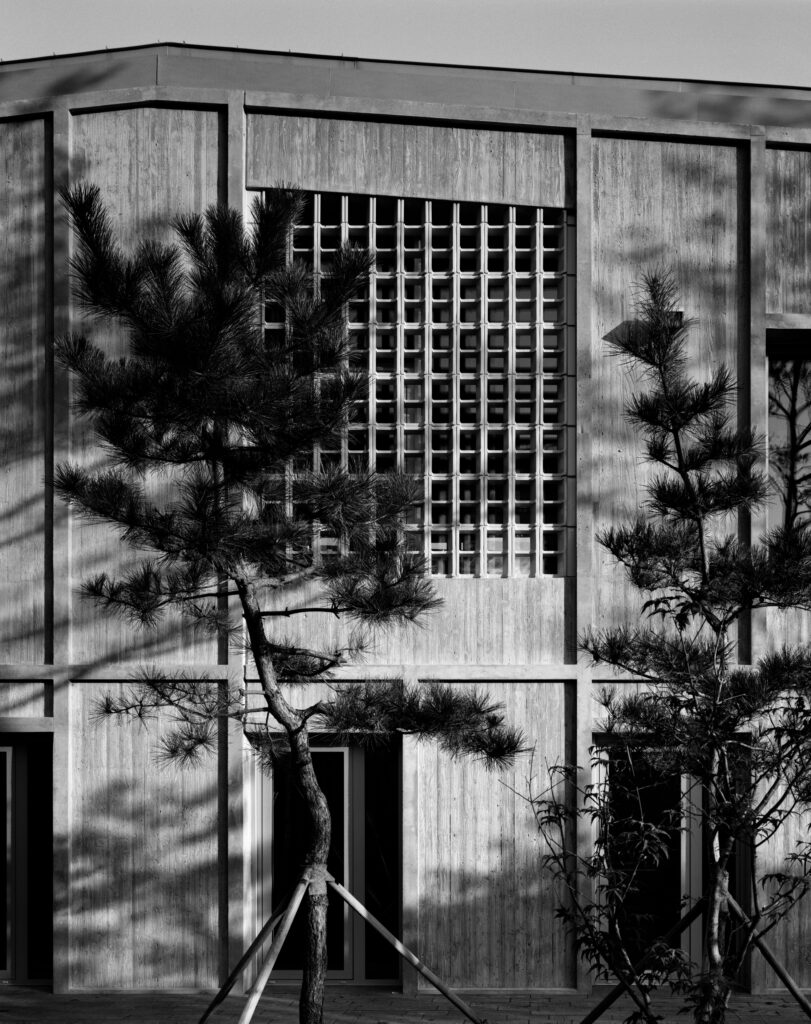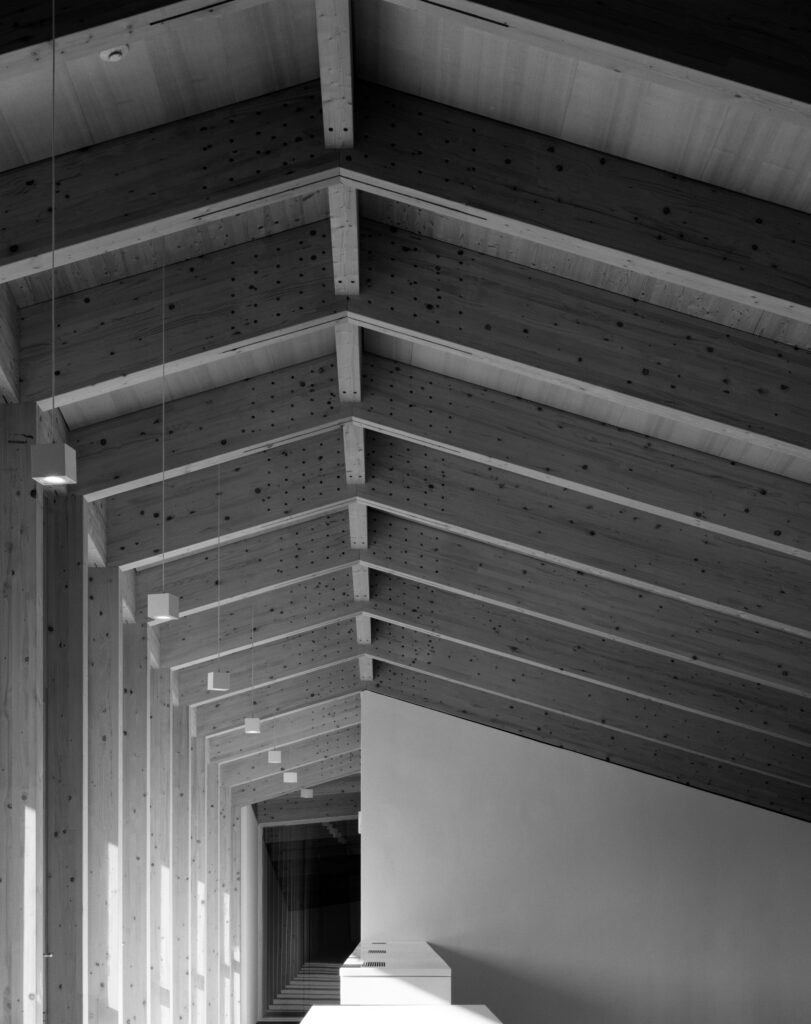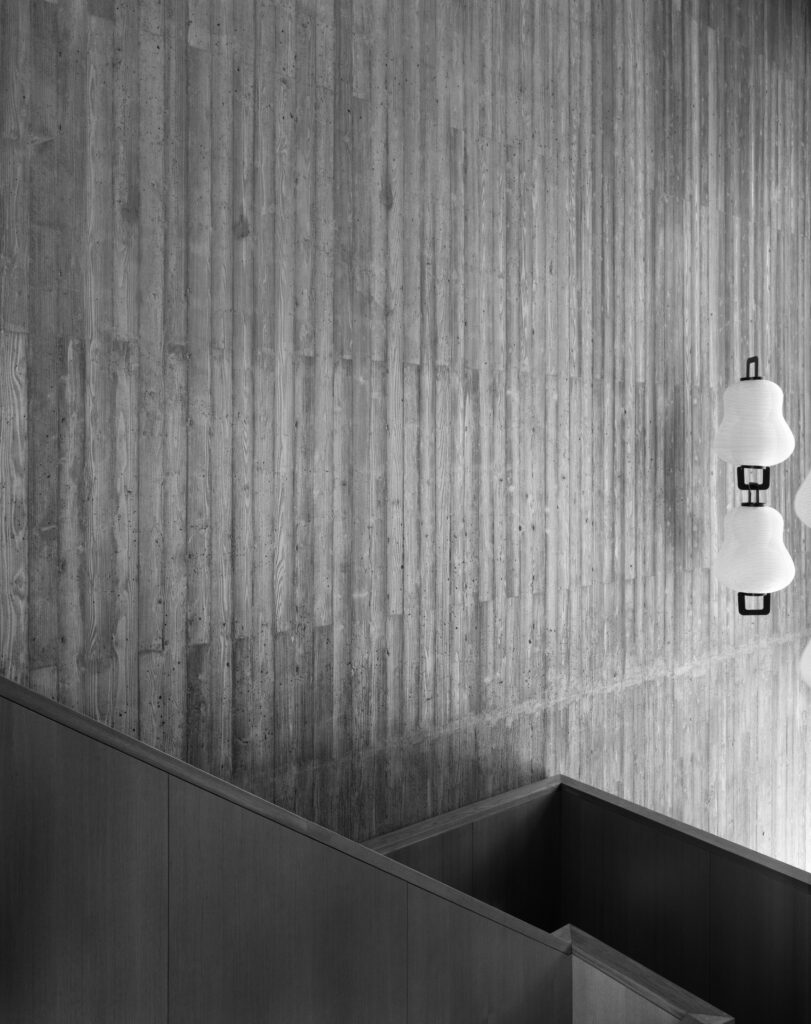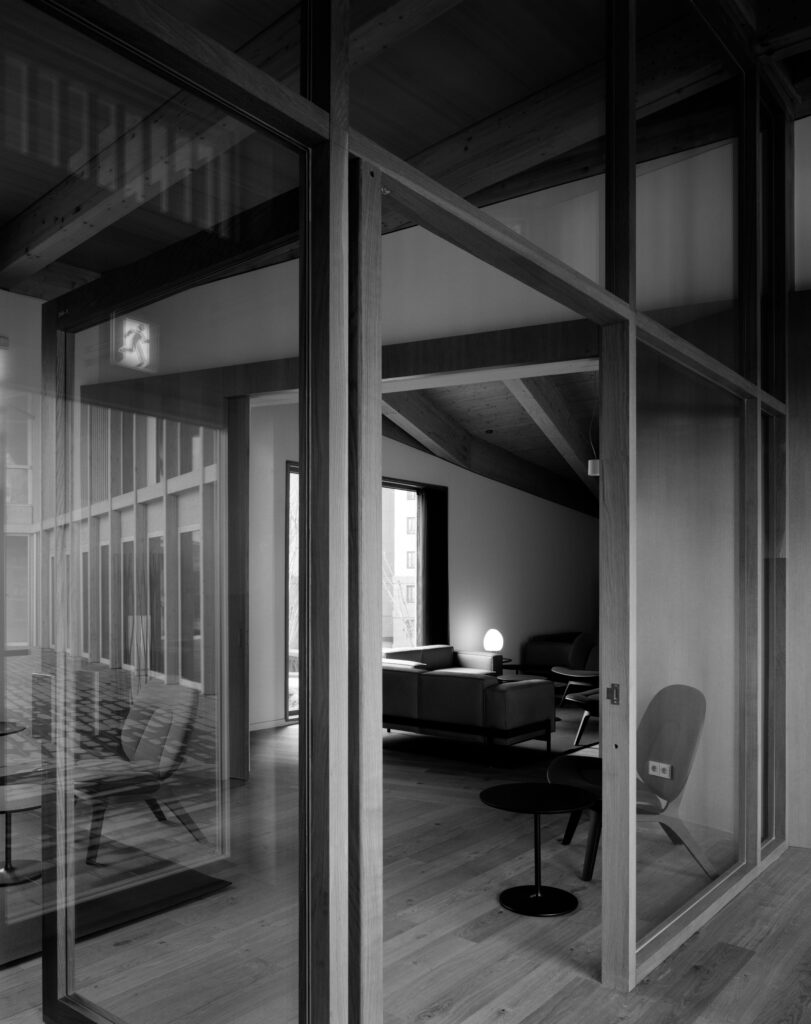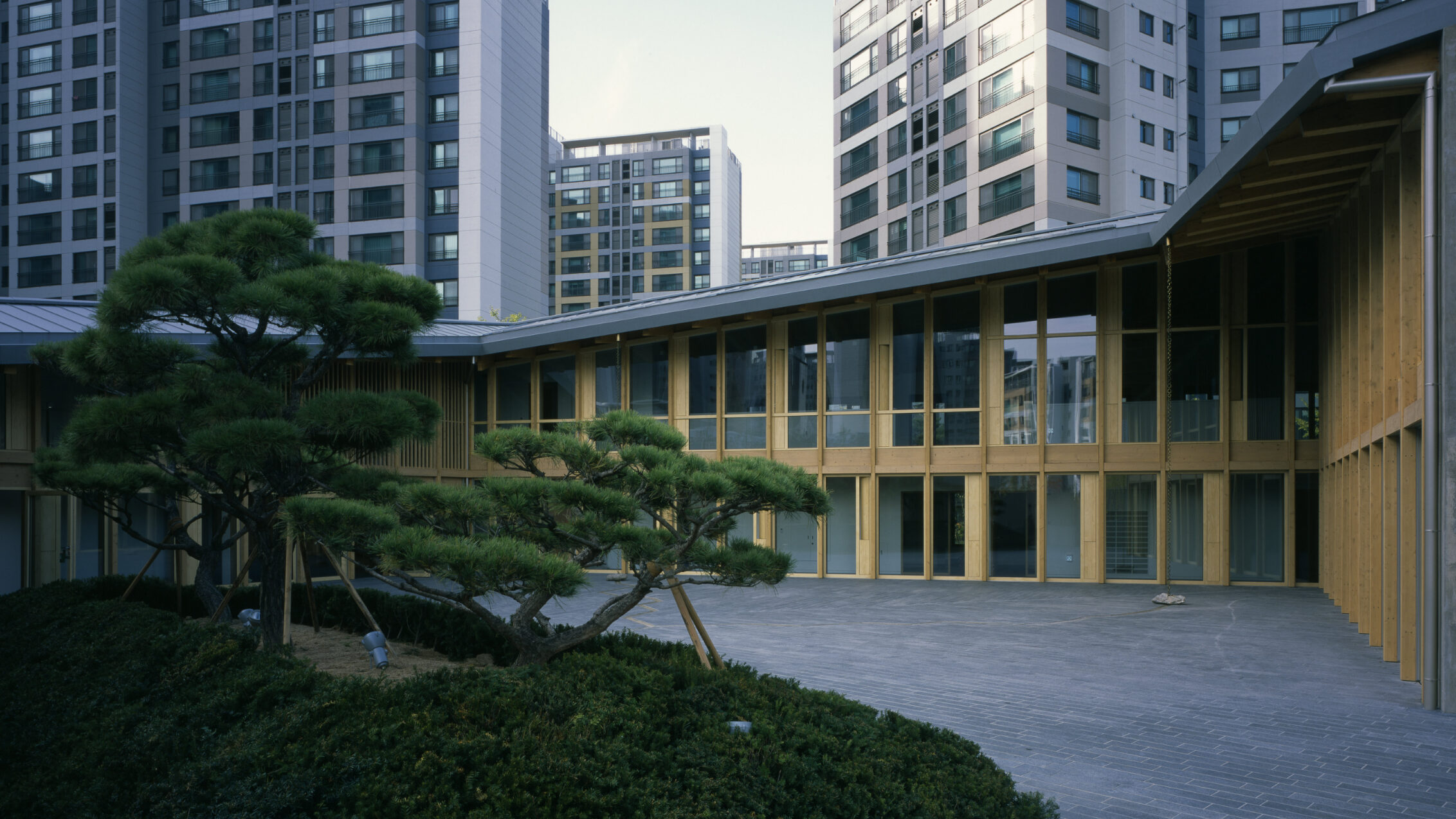
Swiss embassy in Seoul
The award-winning new build for the Swiss embassy in South Korea combines traditional craftsmanship with the high standards of sophisticated architecture. The embassy building symbolises integration and openness, the native and the foreign, and the urban and diplomatic spaces.
Swiss Federal Office for Buildings and Logistics (FOBL), Bern
2017-2019
Architecture
best architects 22 (2022), Korea Wood Design Award (2020), Korean Architecture Excellence Award (2019), Award of Excellence Monocle Magazin/Soft Power Award: Best Embassy (2019)
Hélène Binet, Inho Lee
Administration
Geneva, Schweiz
Lausanne, Switzerland
Project specifics
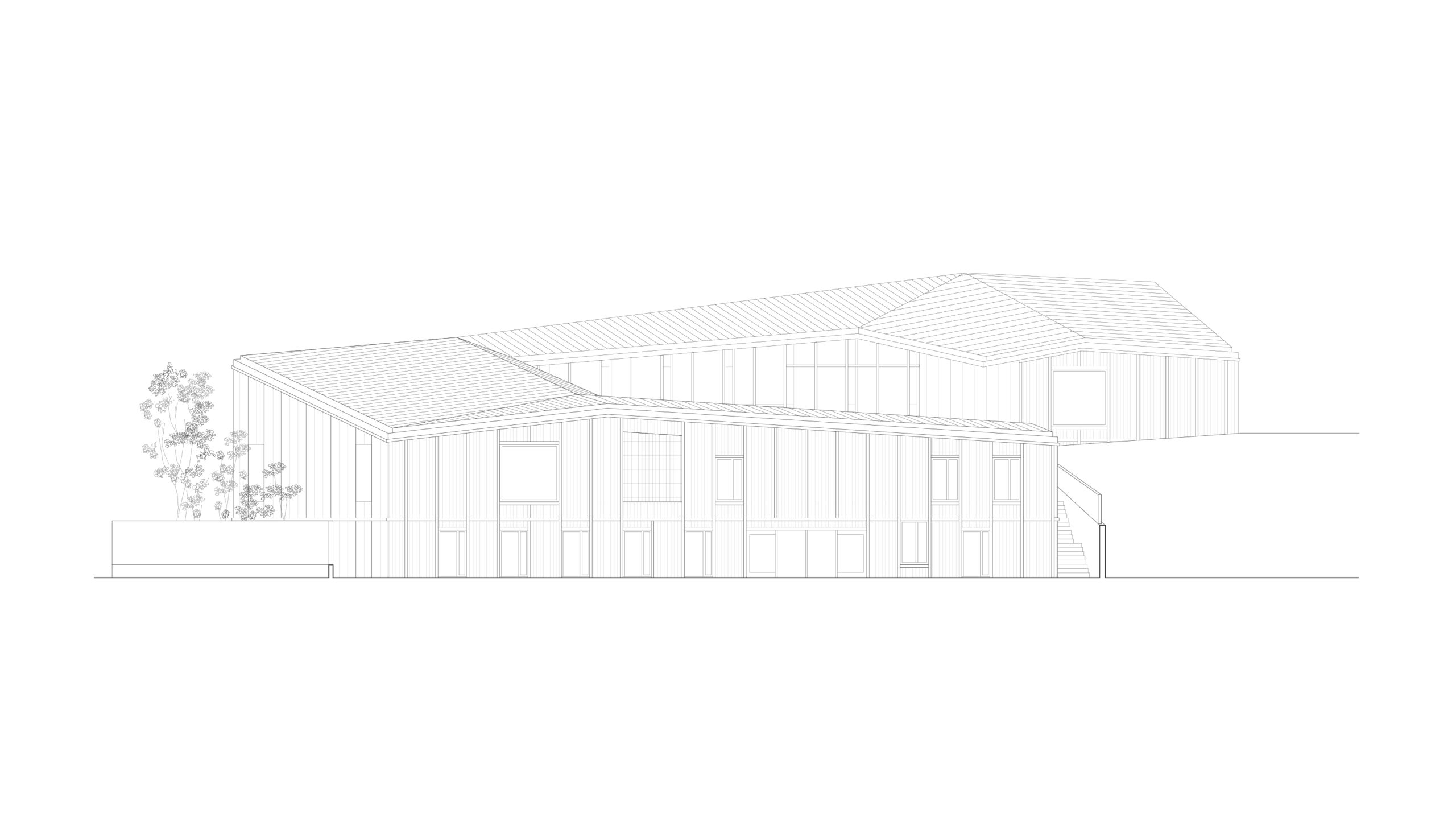
Connecting two cultures
Unser Entwurf für die Schweizer Botschaft interpretiert das «Hanok» neu, das traditionelle koreanische Hofhaus. Gleichzeitig werden darin die hohen Sicherheitsanforderungen mit dem repräsentativen Charakter einer Botschaft in Einklang gebracht. Das Gebäude im Herzen von Seoul vermittelt die Verbindung zwischen den beiden Kulturen.
Project idea
The Swiss hanok
Unsere Recherchen über die traditionelle koreanische Architektur haben Parallelen zwischen dem Hanok und der Funktionsweise einer Botschaft aufgezeigt: Im Hanok sind alle Räume um den Innenhof angeordnet, der sie miteinander verbindet. Ebenso erfordert die Funktionsweise einer Botschaft starke räumliche Beziehungen zwischen den verschiedenen Einheiten: der Kanzlei, den Repräsentationsräumen und dem Wohnbereich.

Nicolas Vaucher, architect and member of the Lausanne/Geneva management teamThe form of the hanok guided us towards the typology of a large house.”
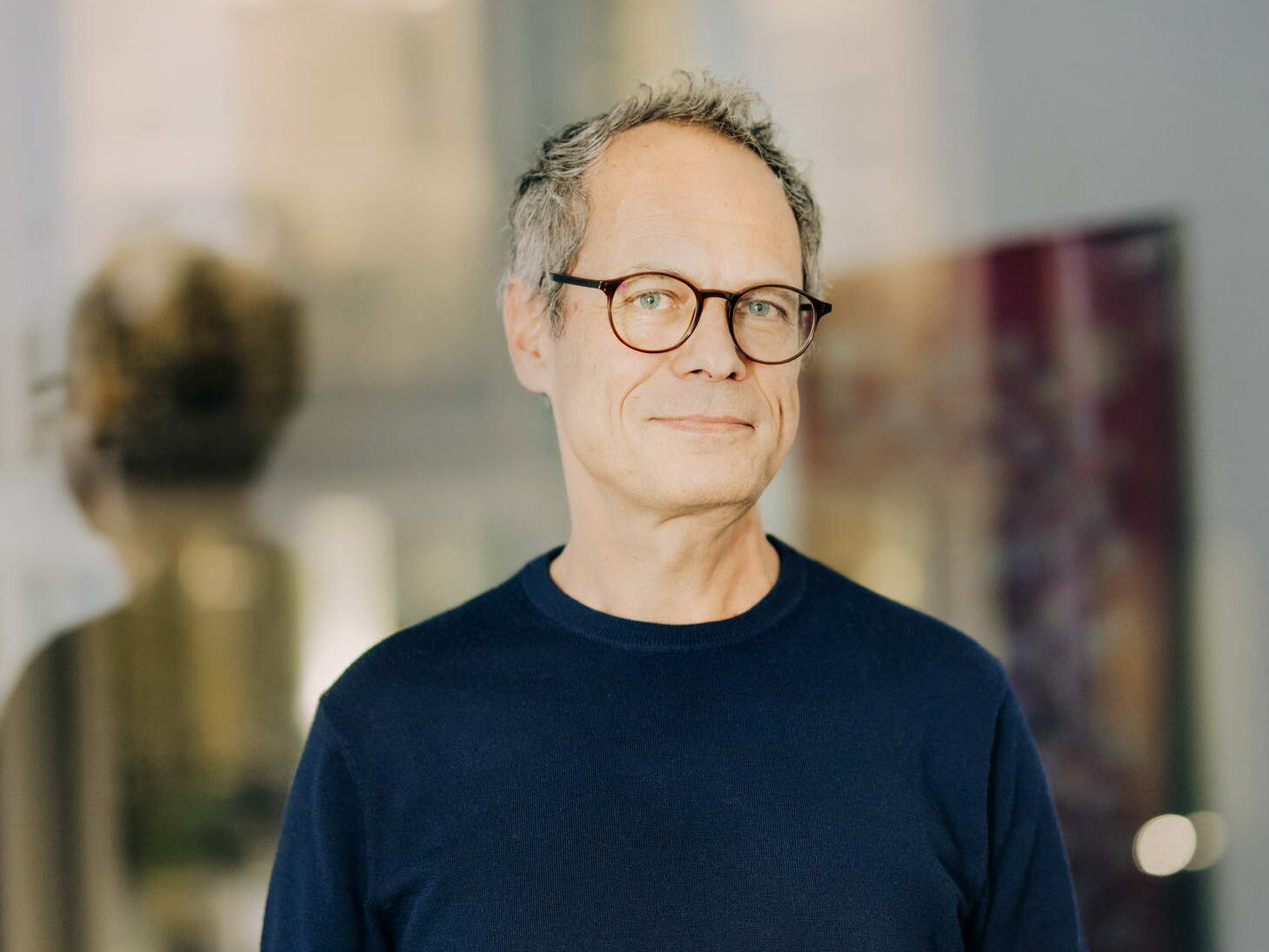
Urban integration
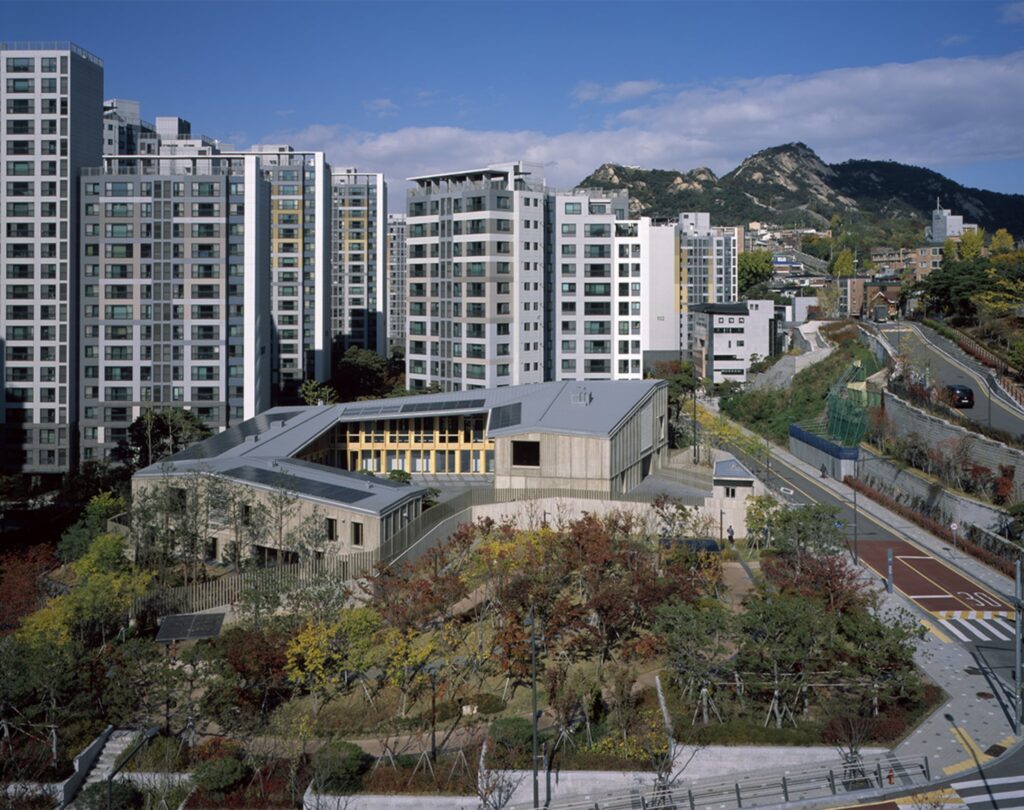
A horizontal structure amidst high-rises
Our architectural goal was to respond appropriately to the place where the building was anchored, applying the perspective of an outsider with considerable humility. Rather than compete with the abundance of new residential high-rises, we proposed a modest two-story building that wraps around its interior courtyard. The different parts of the embassy, including common areas, workspaces, reception areas, and even the ambassador’s residence, are oriented around and connected by a central courtyard. The courtyard itself is a much-appreciated location and is regularly used for events.
Design elements
Tradition meets modernity
The traditional hanok is single-story and made of wood, clay, stone and rice paper. Our reinterpretation uses wood, glass and concrete and has three stories. While the façades in the exterior areas are made of exposed concrete, the façades facing the courtyard are made of wood and glass. The finished details are the result of a close collaboration between Burckhardt and local companies.
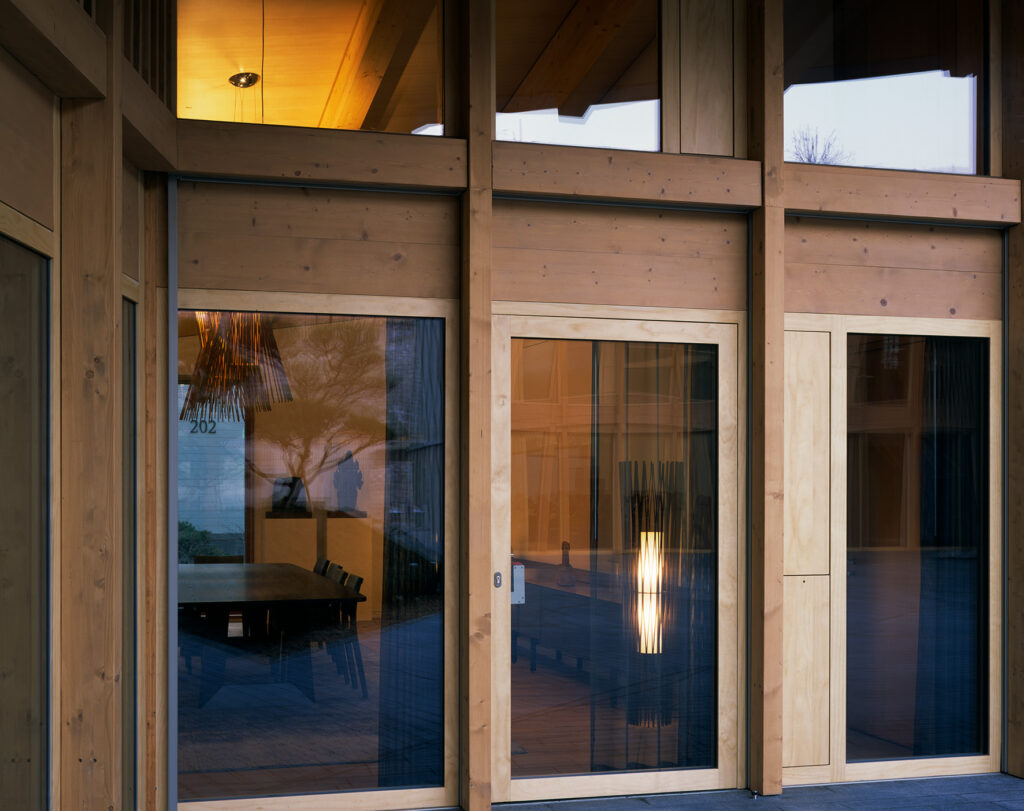
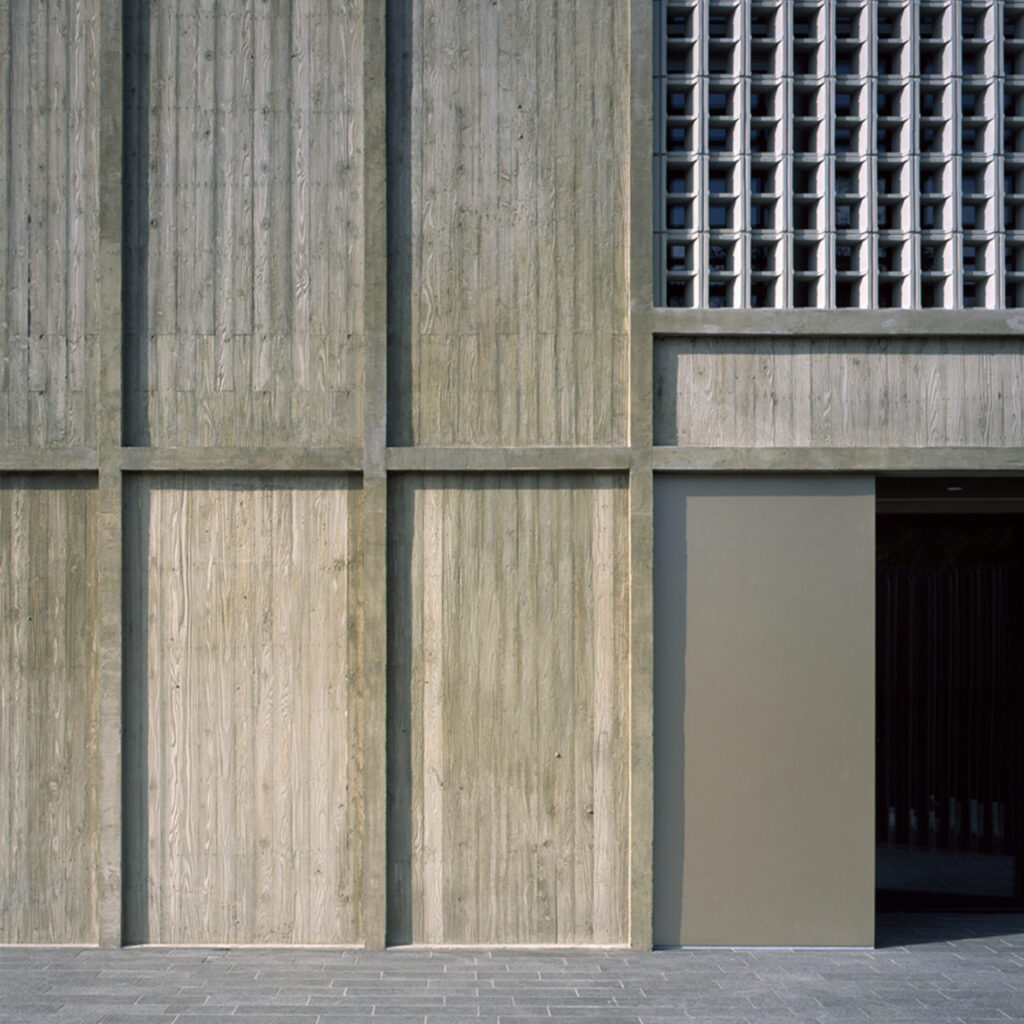
Local craftsmanship
For the design of the exposed concrete façade we used the traditional Korean formwork method. The formwork structure consisting of squared timber gives the concrete surface a wood-like texture. The wood theme is also reprised in the courtyard façade.
Traditional elements
The motif of the traditional Korean claustra is also evident in the embassy’s architecture: a sunshade consisting of vertical wooden slats and glazed ceramic claustra create an interesting play of shadow and light in the spacious common areas.
